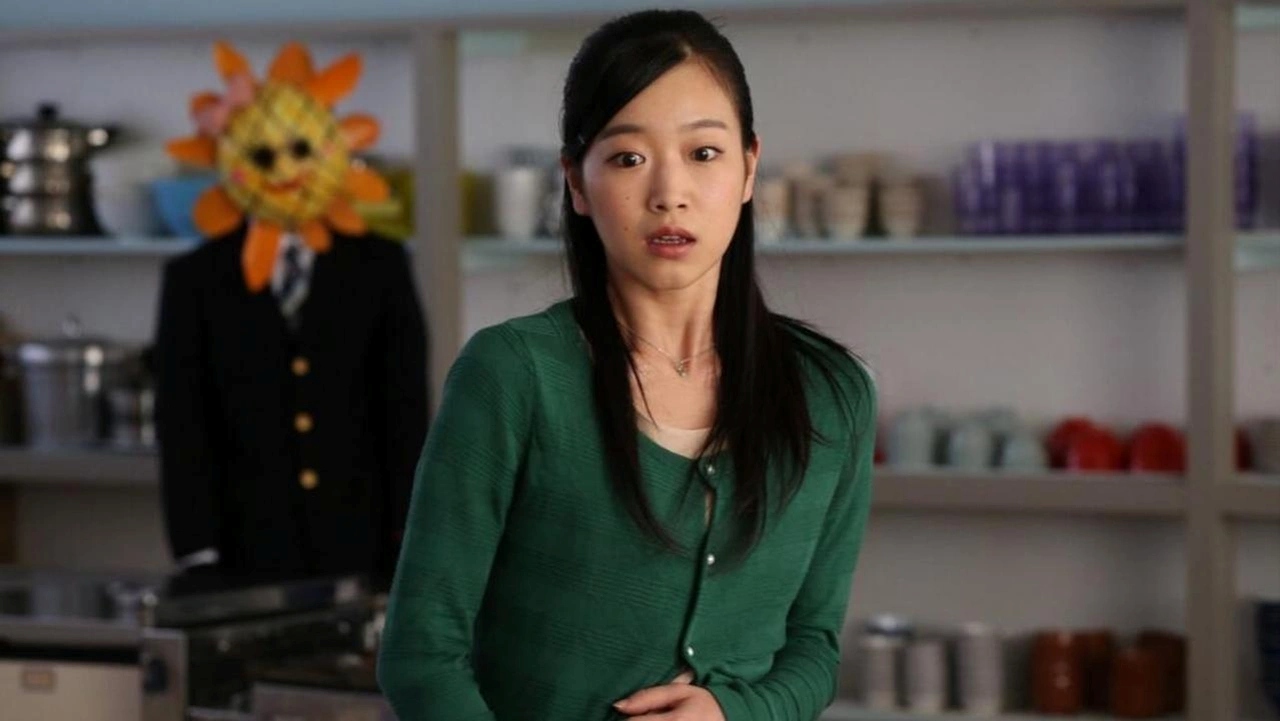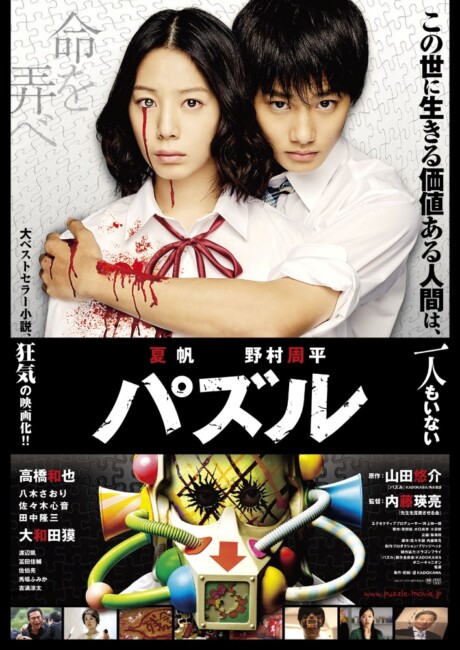Puzzle (Pazuru)
Crew
Director – Eisuke Naito, Screenplay – Eisuke Naito & Makoto Sasaki, Based on the Novel by Yusuke Yamada, Photography – Yoko Itakura, Music – Hisashi Arita, Production Design – Norifumi Ataka. Production Company – Bridgehead Productions.
Cast
Shuhei Nomura (Shigeo Yuasa), Kaho (Azusa Nakamura), Takahashi Kazuya (Detective Mitome), Kokone Sasaki (Masayo Yasuda), Ryuzo Tanaka (Chairman Takai)
Plot
44 days ago at Tokumeikan High School, schoolgirl Azusa Nakamura jumped from the school roof, although survived the fall. Fellow pupil Shigeo Yuasa was greatly upset with what happened. Twelve days ago, he led a group of three other pupils, all of them hidden behind daffodil masks as they took the pregnant Ms Yasuda hostage and tied her up, forcing the other teachers to hunt through the school for pieces of a puzzle to save her life. This became a ruse for them to abduct the principal Chairman Takai. Subsequently, Shigeo led the authorities through the town on hunts for pieces of other puzzles, each leading up to a series of elaborately staged killings. Leaving hospital, Azusa was drawn into his scheme as Shigeo sought to obtain revenge for the horrible things that had been done to her.
Puzzle comes from Japanese director Eisuke Naito who had previously ventured into the horror genre with the relatively little known Let’s Make the Teacher Have a Miscarriage Club (2011), The Crone (2013) and Evil Hospital (2013).
Puzzle starts out seeming like it is a standard Japanese teenage high school drama but quickly takes a turn for the twisted. It ventures into not exactly Saw (2004) territory but certainly somewhere that has drawn inspiration from it. One’s attention is held by the scene soon in where the students in daffodil masks tie up the pregnant teacher (Kokone Sasaki) and torture her, making the rest of the staff run around the school to find puzzle pieces, many of which are also booby-trapped. Like Jigsaw, the teenage hero of the film likes to devise fiendish games and have people racing for their or others lives trying to solve them.

Unlike Saw, Puzzle is less interested in the sadism and torture element. On the other hand, Eisuke Naito doesn’t do much to involve us in the puzzles and games – in Saw, for instance, piecing together the clues in the room was of vital importance but here the film is never concerned much about the individual games, more with the puzzle-maker’s ingenuity.
The film is also burdened with a complicated and at-times hard to piece together plot where what is happening takes place in non-linear order and the timeframe keeps jumping back and forward. This has the purpose of hiding why things are happening. On the other hand, the plot soon starts to lose one. Moreover, the last quarter heads off somewhere else where the people responsible are killed off fairly soon in and without much event. The film then throws the relatively peripheral character of Takahashi Kazuya’s detective into centre stage for a big rooftop showdown with Shuhei Nomura where you only end up puzzled as to why these two characters are engaged in a to-the-death struggle as nothing has been done to establish their conflict.


